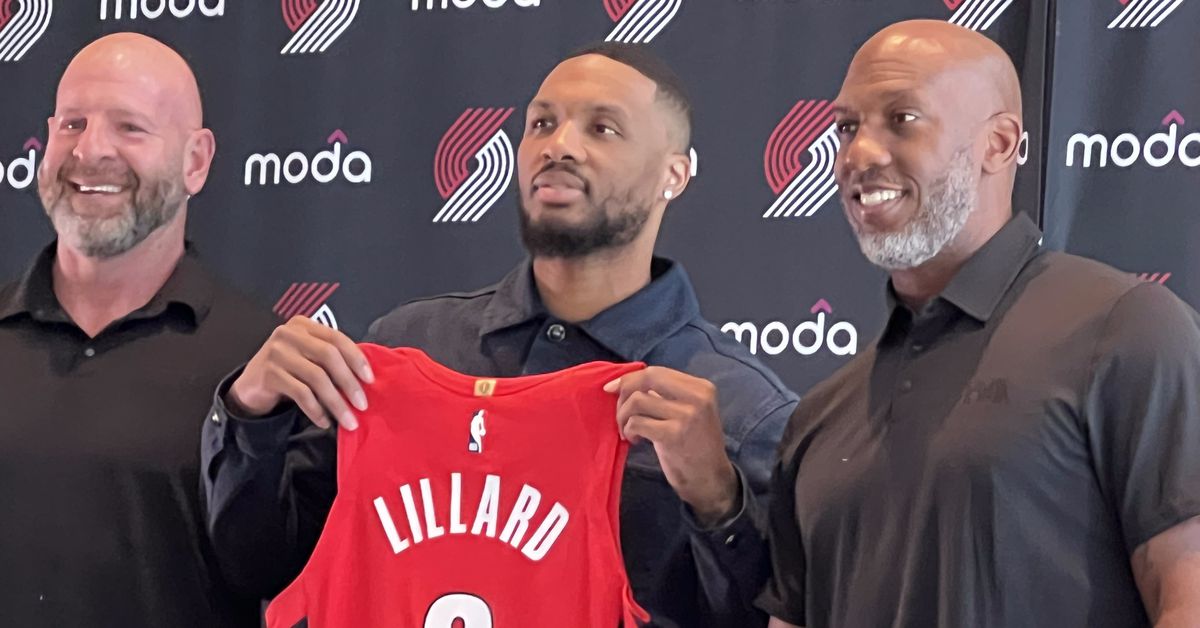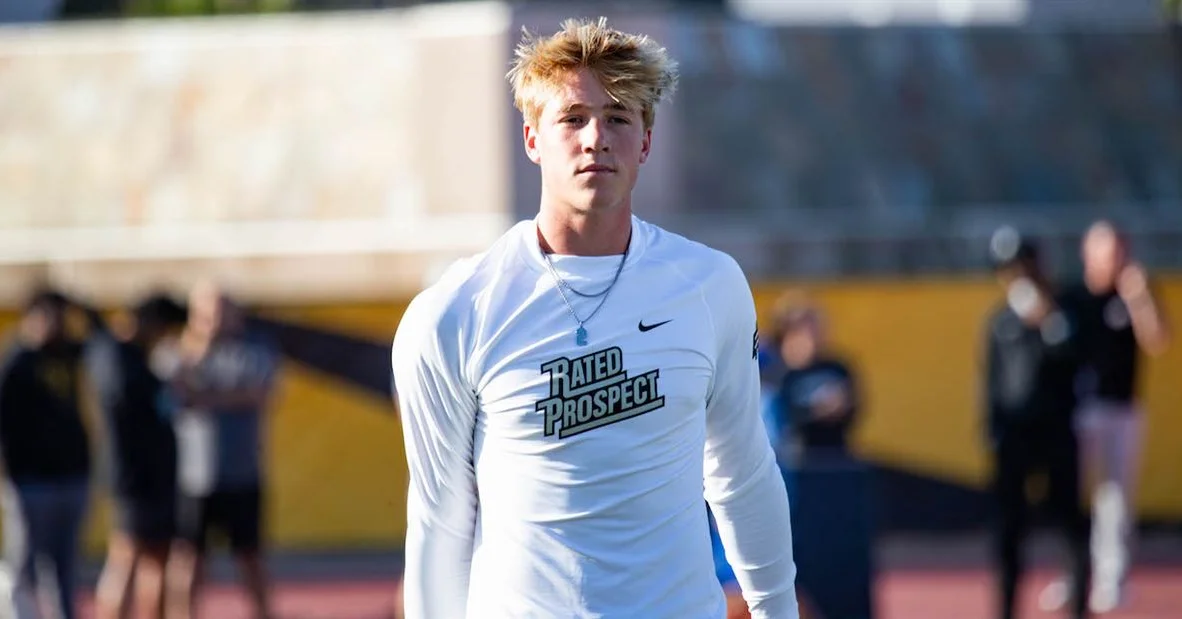Quacking the Roster: Oregon Ducks Offensive Line Transfer Alex Harkey
Harkey graduated high school in 2020 and was unrated by the scouting services; no prep tape seems to exist from his small hometown in East Texas. He enrolled at Tyler Junior College a few hours away, which like all of NJCAA Region XIV pushed its 2020 season back to the Spring of 2021 due to covid. As his time there coincides with future Oregon safety Kobe Savage, I’d previously archived all of Harkey’s games from TJC and its opponents’ livestream pages; I checked the tape to verify his presence and absence, though not for charting and grading him so early in his career.
While the four games Harkey participated in of TJC’s eight-game Spring season don’t count against eligibility due to the NCAA’s holiday, they’re a peculiar part of his record and recounted differently – and inaccurately – by every school he’s attended, and since there’s some potential confusion about how much college time he has left and whether he’s always been an offensive lineman, I’ll detail the matter. Of all things, Harkey was described as a tight end during the 2020-21 season, and even as the starter as such on some of the stat sheets officially submitted to the regional office. But TJC was a four-wide offense that didn’t use a tight end … they sometimes used a blocking H-back, but this was a converted linebacker, not Harkey. When Harkey appeared, it was on their rare six-OL jumbo sets wearing jersey #79, and was never eligible to catch a pass, nor did he. He never appeared slender enough to be a tight end, always looking to my eyes to be around 300 lbs at that time.
In the Fall of 2021, Tyler JC was ready to play a full season and they wanted Harkey to be their starting right tackle. However, due to at least one injury and possibly more than one, he wasn’t available until the fifth game of the season against Northeastern Oklahoma A&M and ultimately only played at that position in four games that season. But the explanation for why Harkey was in or out was tough to make out as the audio quality for the stadium announcer was close to incomprehensible.
Harkey was recruited to Colorado in 2022 as a mid 3-star (.8393) Juco in the 24/7 composite. That’s somewhat noteworthy as Colorado didn’t change their undergraduate credit acceptance rules for transfers until the following year – up until then they had the same restrictive policy as Stanford did, and on average were taking the second fewest number of Jucos and other transfers each cycle among the Pac-12 teams in my roster database. With the Buffaloes, Harkey played all 12 games on special teams (mostly the placekicking unit, sometimes the punt shield), but also came in during garbage time for four games as the right guard, including against Oregon. I hadn’t charted those appearances at the time and don’t include his performance in his grades for this article, but I revisited the tape to verify.
Coach Sanders’ new staff at Colorado replaced virtually the entire roster in 2023, and Harkey was part of the historic wave of departures from Boulder. He went home to Texas State in San Marcos, just a few minutes from his hometown. As he did at Colorado, Harkey appeared in four games during garbage time at right guard, which I watched for verification but didn’t chart or grade. During those four games he also made some special teams appearances, again mostly placekicking and sometimes the punt shield. However, as far as I can tell, unlike the previous year Harkey did not appear at all in the Bobcats’ other eight regular season games on the line or with special teams, nor in the bowl game against Rice.
In 2024 Harkey was a returner Texas State and, for the first time since the Fall of 2021, became the starting right tackle. He played that position for all 12 regular season games on a highly productive offense that finished ranked 28th in F+ advanced statistics (my model would have them around 20th, with the discrepancy being largely explained by terrible turnover luck as they were 120th in turnovers lost, which I believe my model compensates for more elegantly). They took Big-XII champ and playoff-bound Arizona State as well as 10-win and Sun Belt runner-up Louisiana to the wire. Each of the Bobcats’ losses were by 10 points or fewer last year, most having a shootout feel as the offense had to overcome an underpowered defense that finished 77th in F+.
Harkey entered the transfer portal prior to the bowl game and committed to Oregon in mid-December. The plainest interpretation of his eligibility is that he’s a redshirt senior on his final season in 2025. At the time, playing four games during the Fall of 2021 at Tyler constituted a redshirt and the start of Harkey’s eligibility clock ticking, so he’d have four years of eligibility to play four remaining from that point forward, which would be up at the conclusion of the 2025 season. My reading of the NCAA’s Juco waiver is that it’s not relevant here — that it only applies to extinguishing a full season of eligibility, not starting the clock ticking with a redshirt season — and so Harkey has one year to play one left.
However, another possible reading — and who knows with the courts and the NCAA — is that the Juco waiver means the 2021 season at Tyler is to be ignored entirely, akin to how the 2020 season is treated as a holiday. In that case Harkey’s clock would have instead started in 2022, so his redshirt year would flip to 2023 (when Texas State, even though there was no reason at the time in trying to preserve a redshirt for him, behaved exactly like they were) and he’d only have used two full seasons in 2022 and 2024. This scenario would mean he’d have two to play two remaining: 2025 plus 2026.
Although I’ve only graded his play for one season (and all the video clips in this article will be from that most recent one, in 2024), I’ve had eyes on Harkey in each of the last five seasons going back to 2020. His height, weight, and movement have been fairly consistent throughout that time, with a natural athleticism and not much additional physical development needed. I think he’s proportioned more like a guard than a tackle and I wouldn’t be surprised if his shot at professional play lies in the interior of the line. I don’t have any difficulty believing his 6’6” listing is accurate, but his weight has variously been recounted everywhere from 300 lbs to 335 lbs, all of which look wrong to me. I would place his playing weight at San Marcos at somewhere between 310 to 320 lbs.
Harkey graded out very well in run blocking on my tally sheet, at a 9.18% error rate which meets the Oregon standard for his position. I would expect a couple points’ worth of falloff from that number if he starts immediately after transferring due to long-observed phenomena but his physicality, athleticism, and proportions are well suited to Oregon’s run scheme – this is pretty typical for fifth-years who are naturally guards but with the height to move over and are playing tackle.
Pass protection came in at a 15.58% error rate, which is about average for any FBS offensive tackle in my experience – not at the Oregon standard, but far from the worst I usually see either. Harkey’s assets are that he’s got great strength, size, and balance, and he keeps his feet moving with a lot more quickness than might be expected for how big he is. There’s no panic to his game, he calmly takes any defender on and typically just escorts them out of the pocket harmlessly.
Harkey’s liabilities are that he’s not what an NFL scout dreams up as a 1st round offensive tackle – there’s no fast deep vertical drop, he’ll get beat if his technique (footwork or hand placement) gets sloppy since he doesn’t have the ideal frame to win regardless of how he plays, and sometimes there are communications problems with teammates on more complex pressures. These are technical issues which can be improved with a fantastic developmental offseason, although the empirical record from every other school and transfer lineman I’ve studied indicates there are strong headwinds to fight against.
Harkey’s clearest attribute on tape is that his physical strength is just about fully developed for his frame, and has been for years – he’s clearly comfortable with what he can do and moves easily for his size. His footwork is efficient and although not perfect, rarely gets him in trouble for playing unbalanced or attacking without being centered between his feet. On the few reps I’ve seen him lose his anchor, he recovered quickly and still got something effective done on the play as opposed to being taken out of it entirely. Here’s a representative sample of Harkey handling direct pass rushes and inside moves:
(Reminder – you can use the button in the lower right corner to control playback speed)
- :00 – Harkey is the RT in jersey #71, as in all clips. The DE is out pretty wide as a 7-tech, so Harkey has to get lateral fast, but then the DE plants his outside foot and makes an inside move while he’s still widening. Nice footwork here, a stiffer lineman wouldn’t be able to recover with balance and effectively control the gap. The DE then tries an outside spin and Harkey is all over that too. At all times his base is properly in motion to maintain the block and his center of gravity is between his feet through multiple changes in direction. The contrast to the LT’s technique – stuck base, waist bent, overbalanced — is an object lesson.
- :20 – Harkey gets a DT this time while the H-back picks up the DE on the offense’s right. That ODU lineman is listed at 312 lbs but he’s not budging Harkey at all, very firm control throughout.
- :34 – Stance isn’t bad here, it’s hard to say why Harkey loses his anchor as it wasn’t very common for him to just get staggered by a hit like this, but this rapid recovery and keeping his feet to at least get another hand on the DE and prevent a sack happened pretty much every time he did falter.
- :41 – Texas State used this kind of oddball slide/max protection so often it needed to be included for representation purposes. The tailback and H-back get the fieldside free rushers while Harkey’s job is to do the thing he clearly enjoyed the most from all the tape I watched, blindsiding the big DTs by hitting them over and over. Note that he stays within three yards of the line of scrimmage to avoid an IDP flag; in fact Harkey was never flagged at all in 2024.
I haven’t seen Harkey take big vertical drops very often to deal with outside rushers, though he’s not short setting as his feet remain in continuous motion and he sinks his hips as contact arrives. His ability to play with balance while in motion and therefore retain his power on the move lets him effectively run most outside rushers out of the pocket, maintaining contact with them and redirecting their momentum rather than fully absorbing it at the end of a steep drop. His error rate when he’s able to do what I came to think of as the ‘standard Harkey wide escort’ against an outside rush was pretty close to zero; when the end made him do something else it was a mixed bag, with a lot of physical dominance but some technical issues that could use some work as well. Some examples:
- :00 – For true representation I should have included half a dozen duplicates of this rep, as I watched something very similar over and over from Harkey against just about every outside pass rush move – a medium drop with feet continually moving, hips sunk just in time, deflecting the rusher’s momentum deeper while still moving his feet and staying in control of the angle to the QB, and then adjusting up or downfield (since his weight isn’t overbalanced, he can go whichever way) as the rusher goes.
- :16 – This is the type of move that gave Harkey the most trouble, when the DE started wide and then converted speed to power before he could fully get in the way. This is where a deep vertical drop would be better – going back instead of out would mean he’d be in control of the angle, not the DE – but it was very rare to see that. As it is his feet aren’t set when he takes the hit, and unlike the previous video it’s easy to say why he gets staggered here – no balance. He’s still on his feet and a sack is unlikely but the QB is hurried into a dumpoff, although it works out.
- :31 – Here Harkey’s trying his standard wide escort move and he finds out the edge is too fast for it. He needs to just get deeper here, he underestimated the opponent and engaged too early – better ends are going to bend under a technique like this and get to the QB.
- :38 – I think this was an emphasis in November because over the last three games of the season there was an uptick in how deep Harkey dropped before engaging outside moves. Reader, you can count the extra kick here in his drop before he takes on the edge, and he maintains the same flat back.
Against more complicated pass rushes like stunts, blitzes, and simulated pressures, I have more protection breakdowns from Harkey on my tally sheet, though there’s no throughline to these breakdowns that I picked up from watching tape or that emerged from regression analysis. That is, no pattern exists showing any particularly problematic type of pressure, or direction of attack, or game situation, or anything else. And there are plenty of reps against every different kind of pressure with perfectly appropriate diagnosis, communication with fellow linemen, and technique in picking up the unusual rusher such that he gets the job done. So it’s demonstrable that Harkey is equipped to handle various complex pressures, and it’s just a matter of executing the combination of these things more consistently to improve his grades.
I’d typically divide these video compilations on pass rusher count, but that wouldn’t be viable here because Texas State’s various opponents employed a pretty low blitz rate, instead preferring stunts or sims and keeping at least seven in coverage against the Bobcats’ explosive receivers. Instead I’ll split them by how the initial pressure disguise presented from Harkey’s perspective; here’s some examples of outside first:
- :00 – ASU is running a real funky sim that the Longhorns had a much harder time with in the playoffs, with the tackles overloading the left, the fieldside end bailing to cover the mesh, and the corner inserting behind the motion man as the nickel spins out to take away the RB wheel. Very good recognition and patience from Harkey not biting on the boundary end and being well positioned to hit the corner coming in. Now if only the RG were paying attention and peeled off their quadruple-team.
- :08 – This is lock-on by Harkey, the whole point of this stunt is to show the OLB but then slide the end under him and he falls for it … watch his helmet on the replay angle following that OLB as he crosses back inside, and his feet follow his eyes, leaving him unable to recover when he figures it out. Play your spot, don’t chase a guy. The QB makes a bad choice with his clock sped up.
- :25 – Harkey’s recognition and reaction are proper here, hitting the DE to work him onto the RG and then widening to pick up the inserting nickel. But he’s underestimating that guy’s speed – this is a DB, not a lineman, they get there faster – and he hasn’t gotten himself in the way in time. At least he’s heads-up with the ball out.
- :40 – Here’s a blitz, the backer’s coming from this coffeehouse milling and around the DE while the DT cuts to the RG’s outside shoulder in a three-man weave. This is meant to get Harkey to bite on either of the lineman and leave the backer unblocked, but he properly handles it by widening on the outermost rusher and avoiding lock-on.
And inside stunts and sims:
- :00 – This T-E stunt has the DT going in first and the RG needing to hand him off to Harkey so he can take the DE coming in behind him. Good communication and exchange, and Harkey isn’t fazed taking on the big DT – look how solid that base is, and with no advanced setup due to the stunt.
- :14 – The defense has six on the line of scrimmage with both ILBs, and unusually, backs out the edges into coverage. Harkey has it sussed out and points out where the pressure is coming from pre-snap, picking up one of the tackles while the RG gets the backer. Or well, the RB does.
- :26 – Here’s an E-T stunt, with the end going first and the tackle coming around outside behind him. I don’t think this is lock-on in this case, Harkey’s head is up and he’s trying to get the end onto the RG fast so that guy’s taken care of before he handles the tackle (the same thing is happening on the left side, this is probably part of their instructions). But trying to do it from this posture is never going to work, he can’t back out enough to take on the stunt and shove forward and recover his balance to block it. Better to just trust the RG to pick up the end on his own and take the tackle clean.
- :36 – The safety creeper here is very clear, Harkey needs to recognize it better and not get stuck on the handoff of the DE to the RG because he’s got work to do with that DB coming.
Harkey’s performance in run blocking was very consistent, and Texas State’s offense was fairly sophisticated with a healthy variety of modern college rushing staples to show it off – zone and power, inside and outside, QB options and designed keeps. Their overall rushing production was pretty good too behind the line’s blocking, 55% success, 5.22 adjusted YPC, and 15.5% explosiveness. (And that’s held back by what I think was a mistake in their RB order of battle, they leaned hard into a 192 lbs (!) power back as RB2 after a big early game but his game-to-game performance was very hot-or-cold, and then of two different UTEP transfer scatbacks they split carries as 3A/3B … the data indicate they should have rationalized this to the power back for short yardage and the one very consistent scatback who was getting 5.9 adjusted YPC every time he touched the ball as the second-stringer. Had they done this my model suggests they would have boosted both their efficiency and explosiveness by about three percentage points.)
As with pass blocking, Harkey’s clearest advantage on the field when blocking the run is that his strength is near full development and he knows how to use it. Most of his assignments in Texas State’s zone scheme (and a few other types of runs) had him controlling the edge setter on the defense who’d alternate between getting into the backfield by going outside or leaning into the B-gap going inside, so the offensive tackle’s job is to go from shoulders parallel to the line of scrimmage, work from inside leverage to stand up and turn the defender, and finish either perpendicular or working downfield. That means continual leg drive, which is something I see missing out of less well developed linemen, but not Harkey. I just don’t see frozen feet and straining to win battles from him, but rather constantly moving feet to keep working the defender to the next phase of the block. Some examples:
- :00 – Very nice control and power here, working the edge-setter as the defender diagnoses the play and goes from backfield attack to tracing the ballcarrier. Feet stay in motion, balance always centered through change in direction.
- :15 – The WR is supposed to (legally) peel the corner but he’s late checking his alignment to the line of scrimmage and doesn’t notice the defender sneaking past him. That leads to a whiff which in turn leads to the RB checking out of the play and heading outside. The end over Harkey, who can see this, changes from trying to get into the B-gap to outside pursuit, so Harkey switches his leverage and drives him back inside and five yards downfield.
- :23 – This is probably the worst run blocking rep that I had for Harkey on the season, I included it simply because otherwise this section is going to be too glowing. It’s representative in that Harkey was more likely to attack hastily in short-yardage situations when they’re trying to just get the back to dive the hold for a quick conversion, notice how he doesn’t work his feet up to the defender but stops short and then attacks with his upper body and loses control. It’s a more extreme example but he could use more patience on these reps regardless.
- :34 – Because neither the H-back lead blocking nor the tailback with the ball are crossing the formation, the lane has to be established instantly. Solid control of the end with continual leverage from the get-go.
On power-blocked runs (and some other outside and off-tackle plays), Harkey’s job is generally to go the other way – establish outside leverage and pin or wash the defense in. Here we see a good combination of strength and mobility by getting into position quickly and driving hard to wall the defense off, frequently knocking multiple defenders out of the play. Some examples:
- :00 – There’s a TE to Harkey’s right and a little WR playing H-back here, Harkey is the one who’s helping the RG wash the DT and the rest of the line inside off the snap. This is a designed QB run (cute move in the backfield, Joe Moorhead would approve), Harkey bulldozes a couple members of the front, I think there are some linebackers stuck in there.
- :17 – Just the right amount of patience here, taking an extra step to let the DE get inside and then sealing him, but not taking too long because the H-back’s wham on the backer and tailback’s dive have to get past him in a quickly developing short-yardage play.
- :24 – The assignment is to pin the DL on this gap scheme but Harkey goes above and beyond, turning him and completely working him out of the play.
- :34 – This is actually 1st down, the chyron is incorrect initially. The zone assignment on this play is fairly complex, Harkey has to get outside leverage on an end who starts outside of him, so he works him inside, but then the backer comes around and Harkey has to maintain his spot so he smoothly hands the end off to the RG and nails the backer, driving him out of the play.
A significant portion of the Bobcats’ run scheme was proximate to the Ducks’ split-flow staples and Harkey graded out especially well on these, with close to no assignment errors at all on chip-and-up to the second level plays. Some examples:
- :00 – Harkey’s blocking on this play winds up being irrelevant because the QB keeps it to the outside, but he can’t know that’ll happen and has to treat it as an inside handoff, which he’s blocking great. Chip on the DT and up to the second level before he DE can squeeze in and trap him, then turning the backer outside so the back could run past him … if he had the ball.
- :06 – The backer is crashing so there’s not much climbing to do here but Harkey gets off the chip quickly and controls him, directing him to the outside fast so the RB can run the gap for a nice gain.
- :16 – Here’s their gadget play QB doing his thing, a fake toss counter with nicely coordinated action between two TEs and the LG pulling. Harkey pauses on the DT chip for a beat while the play develops and the backer is staring at the fake toss, then uses his reaction to the keep against him to get inside leverage, springing the QB for the score.
- :36 – This looks kind of like power but I think it’s a zone-blocked belly pull on a direct snap with another fake toss action; Harkey chips the DT then climbs and pins the playside LB while LG pulls around to seal the OLB and the LT lead blocks downfield. The LT scopes the backer for a moment (one of the clues this is zone) but Harkey’s got him under firm control so he’s totally free to engage the safety and spring the touchdown.
I thought Harkey showed surprising lateral mobility and athleticism given his size on wide pulls and far outside screens, with good footwork to avoid obstructions. I also noticed Harkey on occasion improvising to take half a loaf when a teammate had failed on a perimeter block in order to salvage something on a play, instead of mindlessly sticking to the original assignment and having it result in nothing. Some examples:
- :00 – Nice controlled pull here, unlike a number of linemen I watch who go into the hit as fast and recklessly as possible and wind up whiffing or bouncing off, Harkey actually blocks at the end of his pull, controlling the backer and springing the run.
- :16 – When ODU’s 3-3 defense walked down another backer to a double-eagle, they couldn’t have set up this play better – he’s now the read man on the backside and everyone is accounted for, as long as Harkey can go the long way and take care of the lone backer at depth. Harkey gets it done very smoothly, pulling all the way across the formation and up to the second level to seal that backer in before he figures it out, then finishing the play nicely.
- :31 – I think Harkey’s assignment on the whiteboard is actually the safety who makes the tackle on this screen, but because the slot receiver has lost his block on the nickel, Harkey hits that guy instead so the back has room to get away from the linebacker and make it downfield for 15 yards.
- :49 – This play is supposed to go to the sideline, that’s why all the WRs are leveraged outside and there’s no one to pick up the free safety, I don’t know why the power back tries to force it inside. Harkey is just supposed to block long enough for the catch but winds up extending it and running laterally with the DE the whole way, and they get 5 yards together.
Share this content:















Post Comment